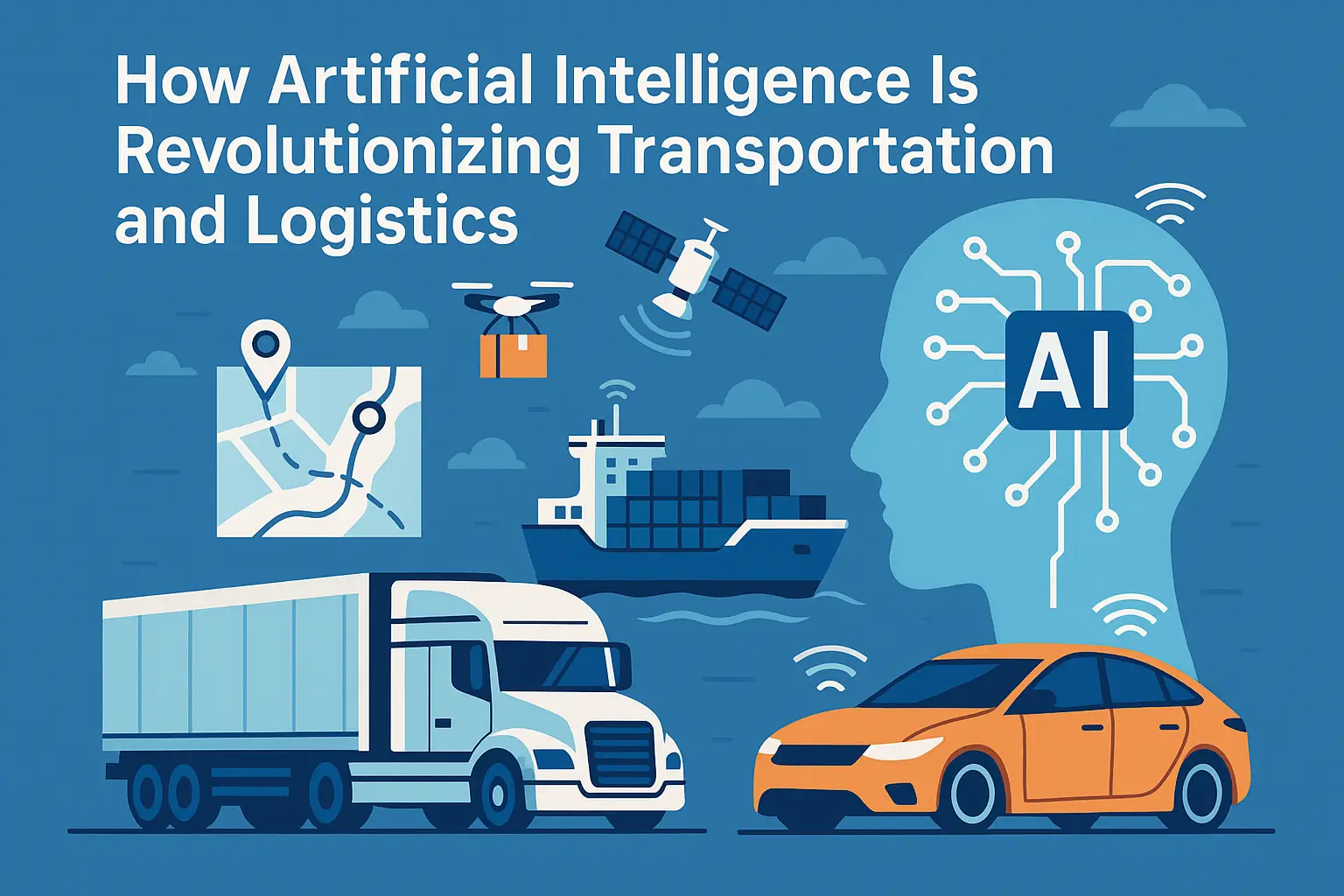Artificial Intelligence (AI) is transforming how people and goods move around the world. From optimizing delivery routes to powering self-driving vehicles and automating supply chains, AI is making transportation faster, safer, and more efficient.
In this article, we’ll explore the many ways AI is reshaping transportation and logistics—and what it means for businesses and consumers.
AI in Route Optimization
AI-powered routing systems analyze real-time data to:
- Predict traffic congestion and suggest the fastest routes
- Adjust delivery schedules dynamically
- Optimize last-mile delivery
- Reduce fuel consumption and emissions
Companies like UPS, FedEx, and DHL rely on AI route optimization to improve delivery performance and cut costs.
AI in Fleet Management
AI enhances fleet operations by:
- Monitoring vehicle health through IoT sensors
- Predicting maintenance needs before breakdowns occur
- Tracking driver behavior and ensuring compliance with safety standards
- Automating dispatch and load assignment
This improves efficiency, reduces downtime, and extends vehicle lifespan.
Self-Driving Vehicles
Autonomous vehicles are one of the most high-profile AI applications in transportation. AI enables:
- Real-time object detection and obstacle avoidance
- Lane keeping and adaptive cruise control
- Predictive decision-making in complex traffic environments
- Coordination between multiple autonomous vehicles
Companies like Tesla, Waymo, and NVIDIA are leading the development of self-driving technology for personal and commercial use.
AI in Public Transportation
AI is modernizing public transit systems by:
- Predicting passenger demand and optimizing schedules
- Analyzing ridership data for planning and infrastructure investments
- Managing fare collection and smart ticketing
- Providing real-time updates to passengers
Cities worldwide use AI to improve service quality and efficiency.
AI in Warehouse and Distribution Centers
AI automates logistics hubs through:
- Robotics for picking, packing, and sorting
- Computer vision for inventory tracking
- Predictive analytics for stock replenishment
- Automated guided vehicles (AGVs) for internal transport
Amazon’s fulfillment centers are prime examples of AI-driven warehouse automation.
AI in Maritime and Air Transport
In maritime and aviation, AI helps by:
- Predicting optimal shipping routes based on weather and currents
- Automating cargo management and customs processing
- Monitoring aircraft health and predicting maintenance
- Optimizing fuel consumption during flights
This drives cost savings and environmental benefits across global transport networks.
AI in Supply Chain Visibility
Supply chains depend on transparency. AI provides:
- Real-time tracking of shipments
- Predictive alerts about delays or disruptions
- Recommendations for rerouting or alternative suppliers
- Risk assessment for geopolitical or weather-related events
This improves agility and reduces the impact of unexpected issues.
Benefits of AI in Transportation and Logistics
1. Cost Reduction
Automation and optimization lower fuel, labor, and maintenance expenses.
2. Efficiency
AI accelerates workflows and shortens delivery times.
3. Safety
Predictive maintenance and autonomous systems reduce accidents.
4. Sustainability
Optimized routes and predictive analytics cut emissions.
5. Customer Satisfaction
Real-time updates and faster deliveries improve user experience.
Challenges and Considerations
While AI offers many benefits, there are hurdles:
1. Data Privacy
Real-time tracking requires robust data security measures.
2. High Upfront Investment
AI infrastructure can be costly for smaller companies.
3. Regulation
Autonomous vehicle deployment requires clear legal frameworks.
4. Workforce Impact
Automation may displace traditional logistics jobs.
5. System Reliability
AI must perform consistently under all conditions.
Future Trends
The next decade will bring:
- Fully autonomous trucking fleets
- Drone delivery systems for e-commerce
- AI-driven multimodal transport networks
- Hyperloop and smart rail systems
- Blockchain integration for secure, transparent logistics
These innovations will redefine the future of movement.
Final Thoughts: A New Era of Intelligent Mobility
Artificial Intelligence is revolutionizing transportation and logistics, driving unprecedented efficiency and reliability. By embracing AI, organizations can build smarter, more sustainable systems that keep pace with a rapidly evolving world.
As technology advances, collaboration between human expertise and machine intelligence will be key to unlocking the full potential of AI-powered mobility.
